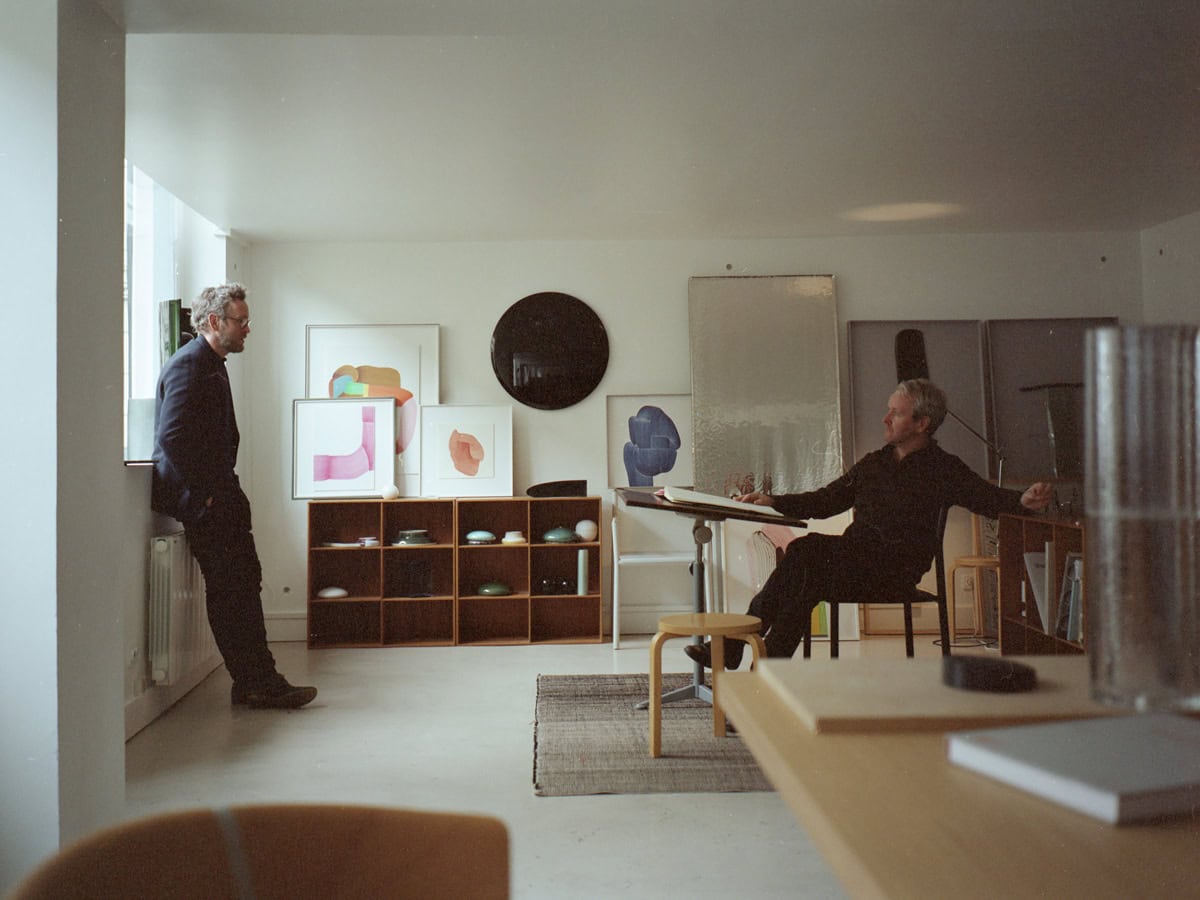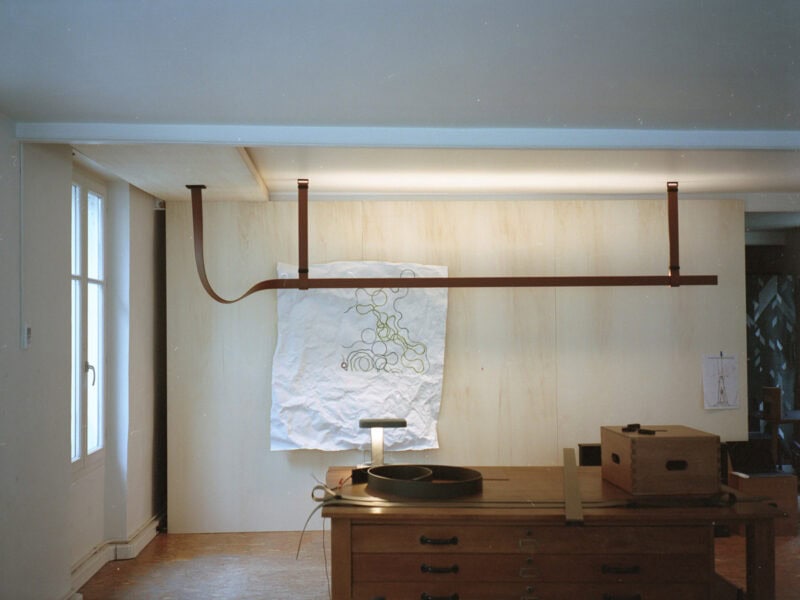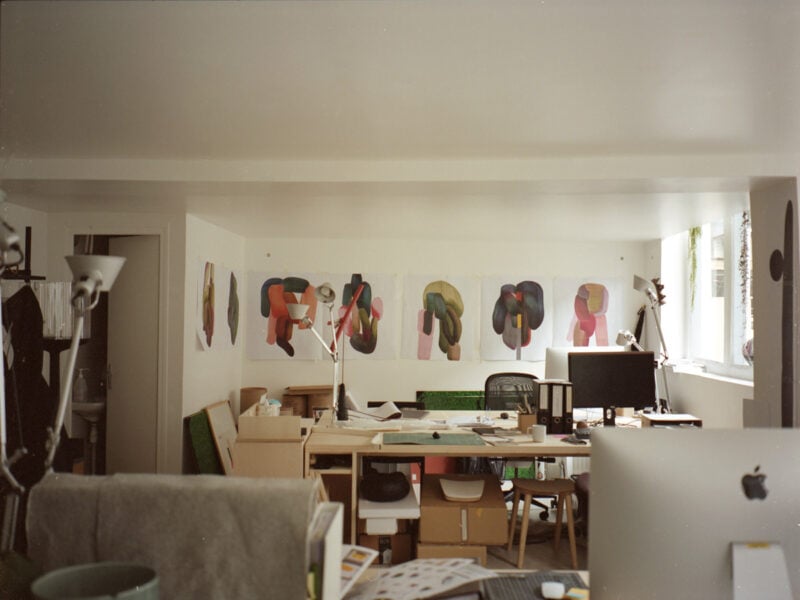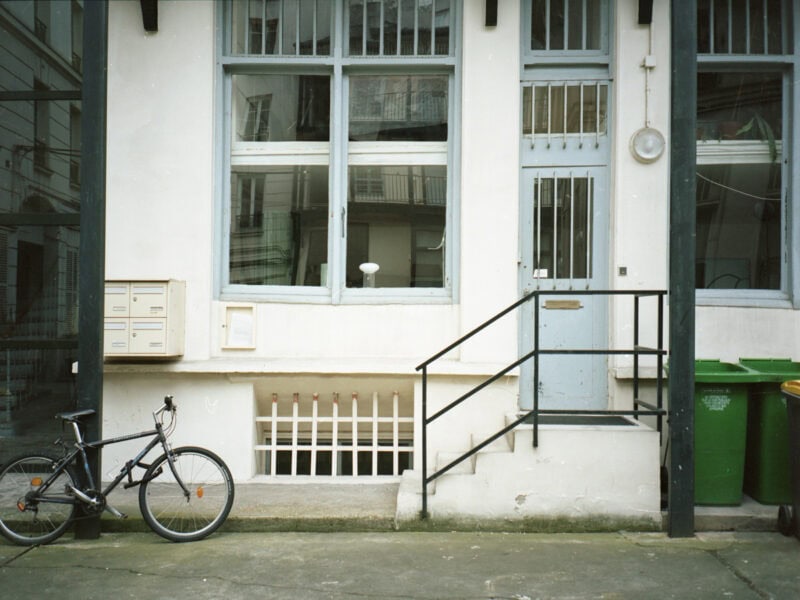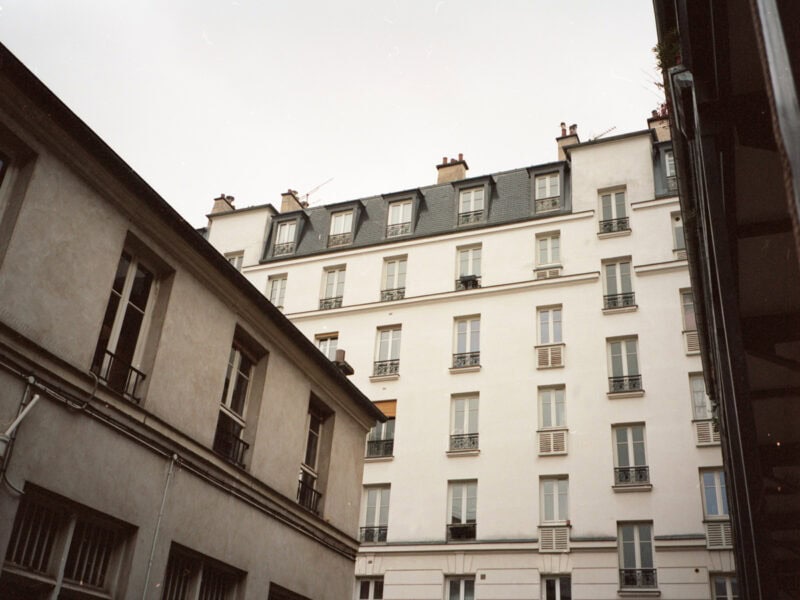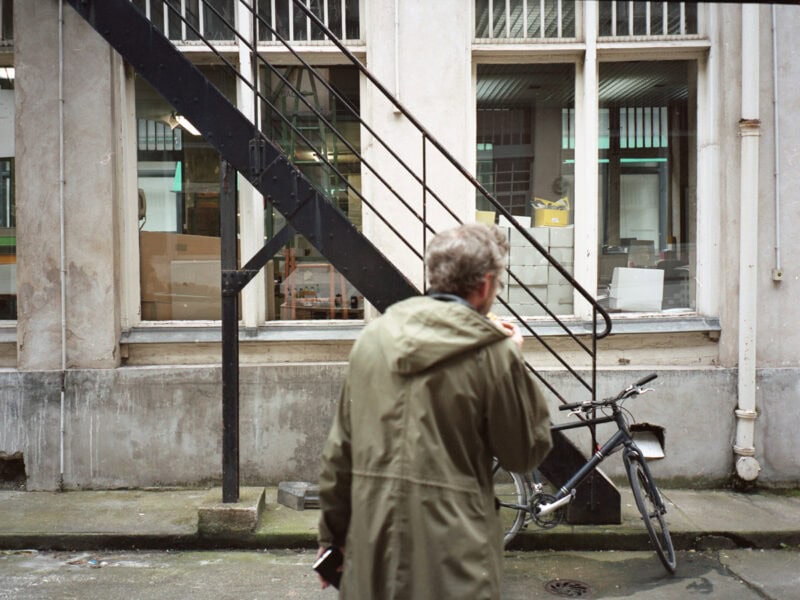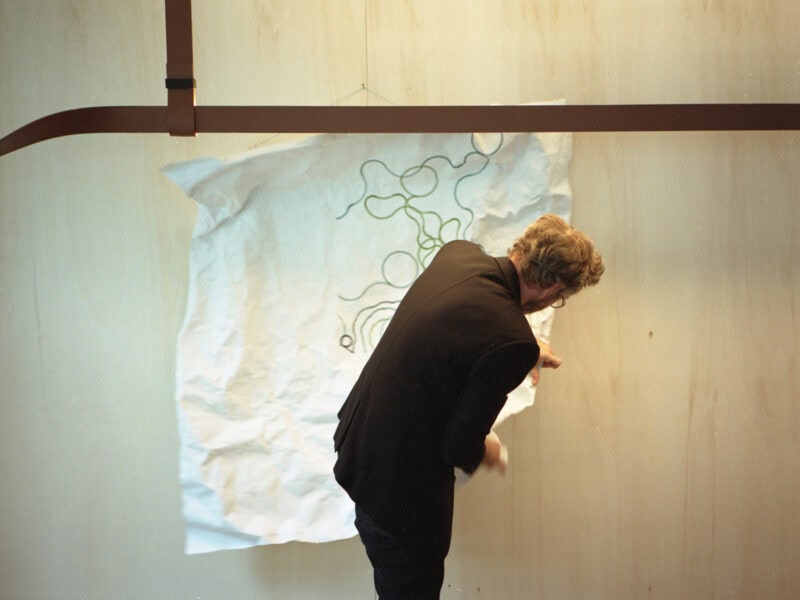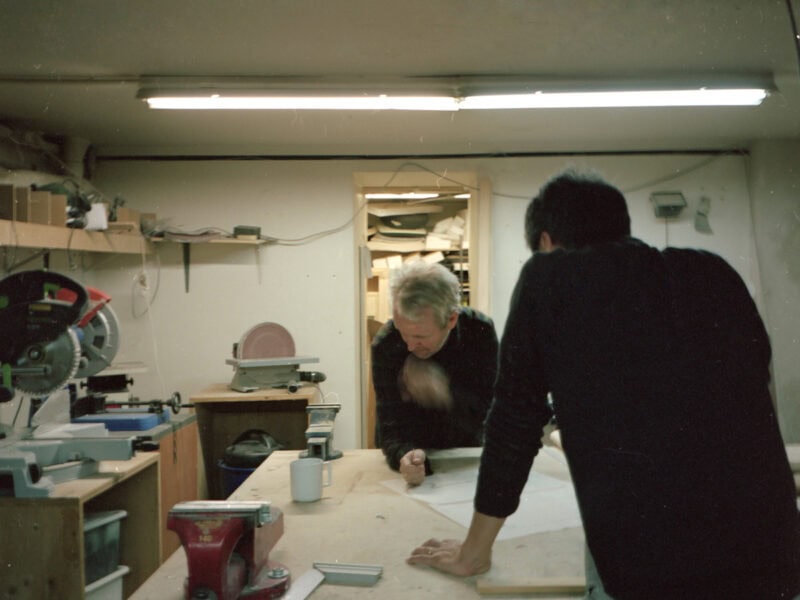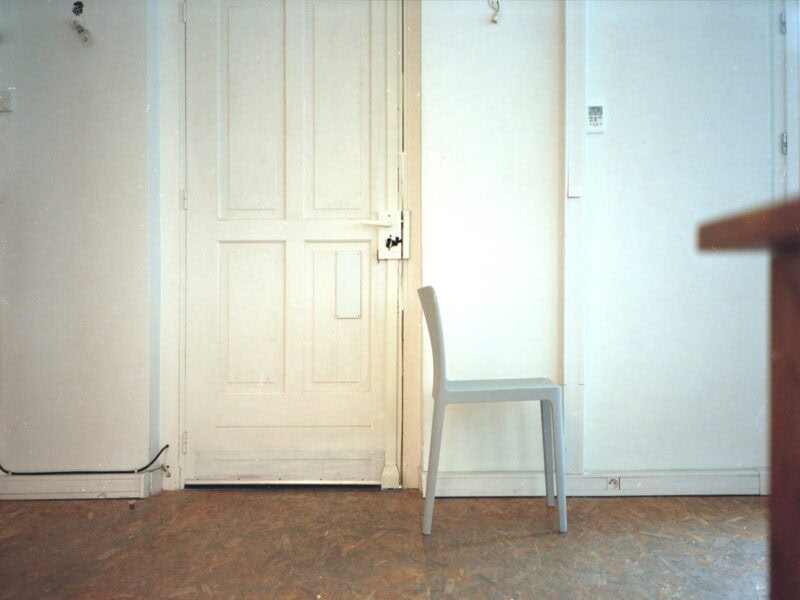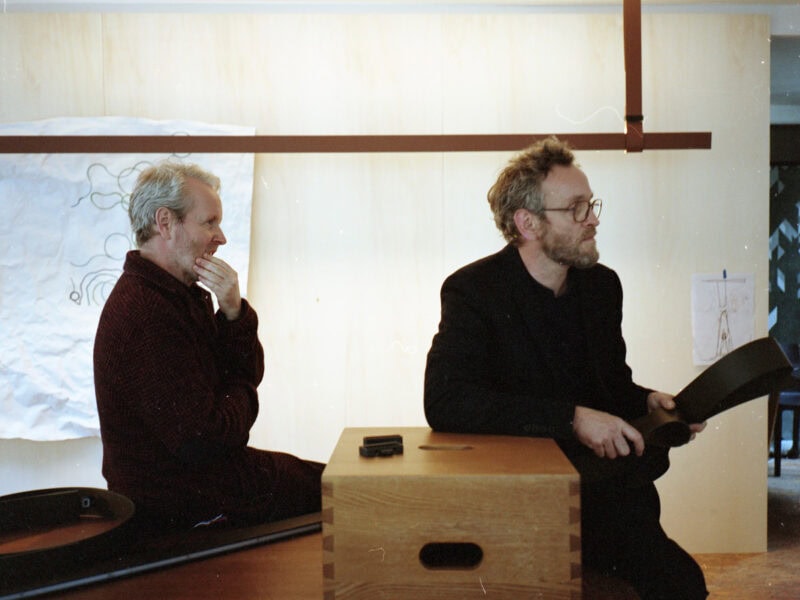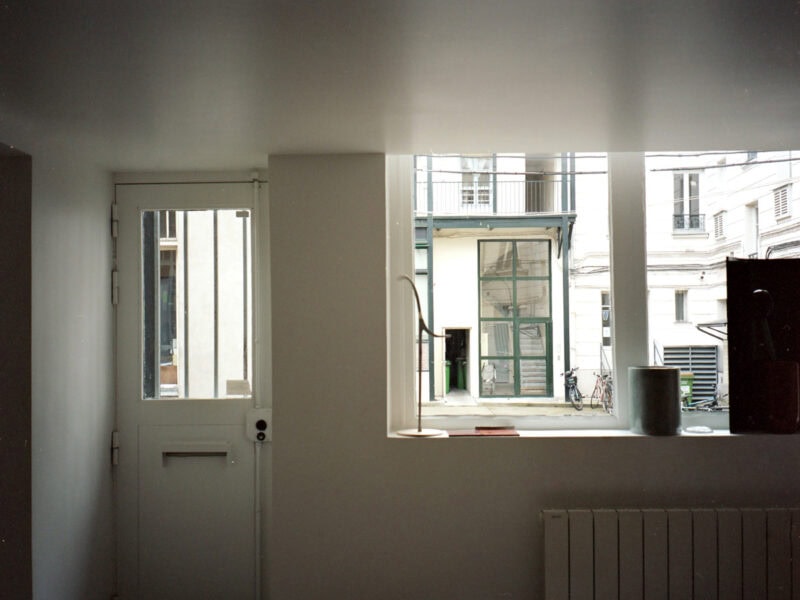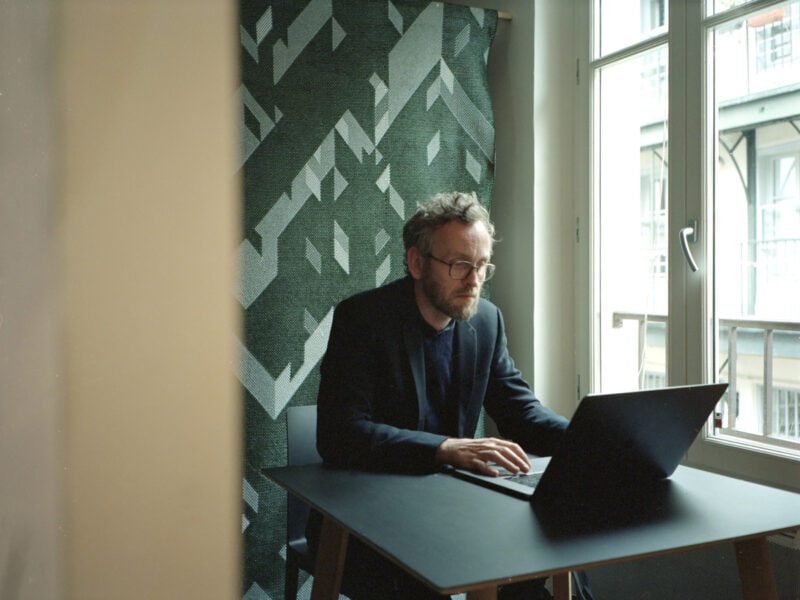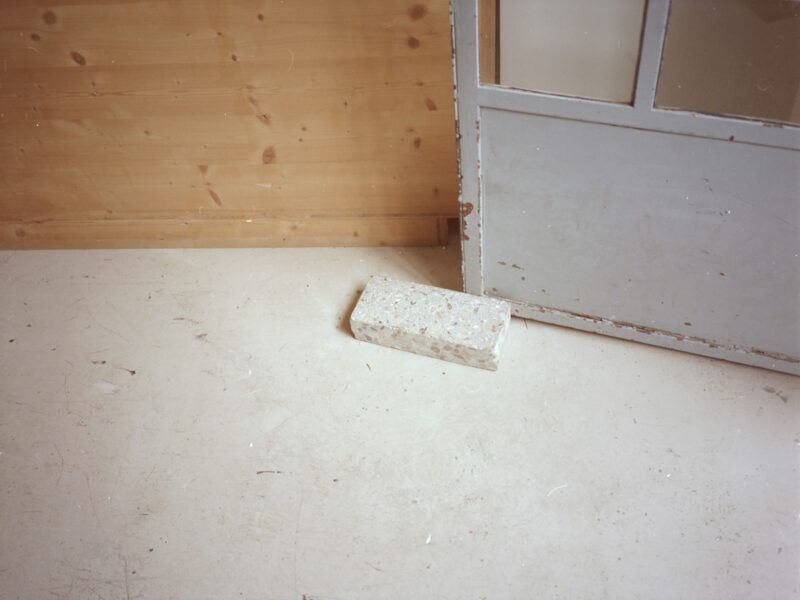We are used to thinking that a high-quality object is one that lasts forever. This idea is a cultural inheritance from the social, technological and design environment of the 1960s and 1970s, brutally shattered by mass consumerism and the markets of fast fashion, fast design and so on. Yet this apparently negative development conceals an important message and a question that we really ought to ask ourselves: «Why should things last forever?» The notion of ephemeral architecture and design has traversed history, finding new expressions in different periods and experiencing a crucial and explosive phase of exploration during the second half of the twentieth century. Today, however, the concept of ephemeral and not-lasting takes on new meaning. And it is a meaning that should become central to a much needed revision of our discipline in light of the social, economic and commercial changes caused by a pandemic that has pressed pause on the entire world for two years. In a long interview for C41 Magazine, brothers and designers Ronan and Erwan Bouroullec re-examined their work in light of this question, asking whether the lifecycle and durability of a design object should still be considered such an important value today.
The concept that becomes the matrix of a design object is not too far removed from the fundamental approach that gave rise to a whole series of new artistic currents such as conceptual art and minimal art in the 1960s. Just as Sol LeWitt translates conceptual processes into volumetric works, the Bouroullec brothers also work by “removing”, i.e., reducing elements to a minimum in the gestational design process. The concept is presented as it is, the result of a process of extreme purification. The main difference between a designer and an artist lies in the fact that the designer, in addition to elaborating a thought, then has to translate it into a functional, practical object and, perhaps most importantly, deal with customers, companies and, more generally, the sales market. This is the key point explored in this interview: how to find a solution that allows all these apparently disparate needs and tensions to work together in harmony. The design process is then nothing more than the achievement of a goal. As Erwan Bouroullec says, using a wonderful metaphor: «Design is a bit like dance. It is not about a great idea and its realisation. It’s more about being permanently aware and listening and trying to be more aware at each step of the process. So, instead of principles, I would say that what guides us is an ethic: a respect for reality as it is». Today, revaluation of the discipline and, more generally, the role of the architect and designer in society seems long overdue. We don’t know what we will come up against in the future, and not even the Bouroullec brothers know the answer. All we know is that we are living in a period of transition, a historical era during which society must necessarily evolve and change (perhaps even radically).
Concept. What are the founding principles of your work?
What is very special about me and Ronan is that, as brothers, we never really discussed the why of things: why together or why design new stuff. We started working together a long time ago, but we’ve always been together, except for our five year age difference. At first, I joined Ronan because he needed someone to help him. He was 25, I was 20. What is quite interesting in our relationship, and also a little bit special, is that we skipped the part where you meet in school and decide to start a studio together. Being brothers means we take everything for granted. So we never spoke about the why and I don’t think we ever really spoke about the how. From the very beginning, our focus has been on the making – making things. We were quite lucky with work coming in and there wasn’t much pre-thinking about how we should be approaching our projects. I think we have built a kind of philosophy through the making, and not the part beforehand.
More natural or spontaneous, I’d say.
Well, I don’t know. I’ve been learning about contemporary art, in which conceptual statements are fundamental. You need to decide your why and then how you make it isn’t that important. The main thing is to ask yourself: how do I create tension in the viewer? And that’s it. That tension can be achieved in many ways, but mainly conceptual. Consider abstract painting, for example: why would you ignore the history of painting to make a picture that your eyes can no longer recognise? The impact of this kind of art stems more from the decision to make a picture that is unrecognisable than the picture itself. So contemporary art to me is really based on tricks, on mental behaviour. But design is very different because, in the end, the meaning of design is functionality on the one hand and, on the other, cooperation with the maker. Many things in design regard a certain practicality, but practicality at a really nice level. Not only the practicality of light and weight, and so on. It’s more like how can you do something which is beyond what you expect? And sometimes you can’t. A coffee cup isn’t going to change the world. But it can bring with it a high level of culture, and maybe surprise. Nevertheless, design is still very down to earth – it’s the making of an idea. And honestly, we never imagined something that would be conceptual at first. We always got through the making and then assessed the quality of the expression combined with the quality of the culture.
Form and function. How do you achieve this union in your work?
Actually I don’t think we do. I mean, we’re very confident in the design process. What does that mean? There is a kind of permanent “remains in question” in design, which is also an open compromise. Whether we’re talking about tiny craft studios or gigantic companies such as Samsung. Most of the time, people think of the design process as an original idea that often gets corrupted during development by technical requirements or marketing issues. But that is just part of the process. In the end, everything we do is meant to be sold at some point. I mean, sometimes things are free, but still the basic meaning of design is cooperation with companies. People work to earn revenue from what they build and so on. When you look at it from the outside, you might think that design is pure in its origins and then gets corrupted by the market in some way. But everything that happens through the process makes the design better and better.
In design, you start at the beginning (the sketch) and then there’s quite a long period of cutting parts out. It’s really a process of removing not adding. Take somebody making music for example. First, they play the piano a little and they feel they can build something. Then, step by step, they will add more and more – working with the producer and making the song grow, adding different layers of sensations. Or again, consider the architect. They design a building, then they win the project and afterwards there is always more and more to do. You know, things like where to put doors and windows. The project grows. In design, especially if you’re in the field of industrial design, you actually need to use less and less material, fewer steps, fewer elements… In the end, the main part of design is removing. And it’s by removing that you make things stronger. They’re somehow more evident, and they really fit into minimal art in a certain way. That why I’m confident in the process of dropping things, of learning from and getting corrupted by reality, because corruption is something that brings a higher level of culture to the object. Achieving our principles means being confident in the process because the process will affect the project in a positive way. And that’s the point: in design you just have to find the best solution. Everything that you need in order to achieve that is part of the process. In this way, design is a bit like dance. It is not about a great idea and its realisation. It’s more about being permanently aware and listening and trying to be more aware at each step of the process. So, instead of principles, I would say that what guides us is an ethic: a respect for reality as it is.
Materials. How do you express the potential of a material through design?
Honestly, I’m not that interested in materials. What I’m interested in is the combination of the process of transformation and the material itself. Because all of them are deeply connected. Take fabric, for example, fabric goes with stitching: they are part of the same thing. If you ask me whether I’m interested in wood, the answer is I don’t know. It’s more about creating a link. A link between materials, but also between the material and the maker who’s going to use it. It’s interesting to see, for example, that every company I have worked with has a specific material. Some are excellent with plywood but completely at a loss with massive wood, or vice versa. Or take ceramics: we worked with an Italian company that uses an incredibly elaborate process to create ceramic tiles. They are made in huge quantities, millions of square metres. We love this kind of process, but we also frequently work with tiny ceramic makers that do everything by hand. So, all things being said, I think that the important thing about materiality and transformation is the culture behind it. What do I mean by this? That one of the roles of design is to create a space where we, as humans, feel comfortable. There are many elements at play when you’re designing an object. One aspect is finding a solution to a need, of course, but the real need is more about creating a context in which, when your friends come round for dinner, they feel very welcome. And this only happens in certain spaces, I don’t really know why. I’ll always remember my grandparents’ home. Every time I entered their home, everything communicated the feeling that I was welcome. My grandparents were responsible for some of that, of course, but it was also all the space around me, everything I could see. I would feel intrigued because everything was full of cultural information. To me, design is permanently connected to culture. When we’re using a piece of wood in the right context, at the right moment, it will remind people of another piece of wood, from a happy memory. Take Proust, for example. There’s an iconic cake that lingers in his memories and now it’s called la Madeleine de Proust. Every time someone eats it, it’s never just a cake. It’s also a story, and it has this incredible power of changing the set-up of our brains. This is exactly how design works. That’s why every time we use a material, we are in fact using a technique. And that implies both working out how to make something and making sure you’re imbuing it with the right level of culture. That you’re connecting with the right memory. Essentially, my interest in materials is linked to the way they connect to certain human memories – and the depth they have in our shared culture.
Commissions. What kind of relationship do you have with the big companies you work with such as Vitra, Cappellini, Cassina and Flos among others?
It’s curious because we are always asked this question, but today the answer is slightly different. We have weekly calls with some of these companies. We know them very well, and it’s important to remember that behind these big companies, it’s always just a handful of people that we interact with. We’ve been working with these companies for a very long time and, like all long-term relationships, there are highs and lows. They’re not love stories, of course, but somehow there’s the same kind of bond – very strong and intense. And we all know that intense relationships evolve over the years. We’re at a stage where we see ourselves as old couples, which means that we are developing deeper connections with some companies and yet with others, both parties feel some frustration because we would like to do more but we can’t find the solution. Commissioning is something that has evolved a lot over the past 20-30 years. It used to be that companies would strongly identify with their physical area and production was local. But then the market exploded so now there is a lot of overlap. Not only in terms of geographical area, but also production typology. It used to be that some of them would do furniture for the working environment, some would do furniture for the home, some would do lighting, some would do carpets and so on. They were very distinct. But now everybody is doing everything. In the beginning, Ronan and I always tried to avoid working with competing companies. Perhaps by changing physical location – different countries, different markets. But then, as they all moved into everything, we began to see overlaps and disagreements. And just like in all intense relationships, the counterpart of intensity is complication. Intensity can mean extreme happiness and also extreme disagreement. So, to sum up our design relationships with companies: they share the same dynamics as old but solid couples. If you think about it, 25 years are a lifetime for a couple…
I love the metaphor you used.
It is honestly very similar but it’s funny because I remember answering the same question 15 or 20 years ago when I would just say it was a love story. Now I can say that it’s a long-term love story.
Things get more complicated.
Well, I don’t know if I’d use the word complicated. But a lot of things are changing and you have to keep moving to keep up with them. Everything always seems clear and simple at the beginning of a love story. Then when you start to build the relationship, the process of finding common desire is quite elaborate. That doesn’t necessarily mean problems, but of course it’s more difficult.
Retail. What was it like to design the Issey Miyake boutiques?
It was a very special experience because we were incredibly young at the time. Mr Miyake was in a very peculiar time of his life. I don’t remember how old he was – maybe 65 or 70 – and he had decided that it was time for the younger generations to step forward. Not exactly to take his place, but at least to make some room for themselves. At the time, Miyake had very cleverly built many brands. Ronan and I were incredibly young (I think I was about 22). Of course we knew of him but we had no idea what it would be like to work with him. And we had never imagined that we ever would. And going to Japan too, it’s probably like meeting Armani in Milan. Miyake was like an emperor. I think what was amazing about his boutiques was that there was no compromise at all. Everything was really clear, neat and advanced. We tried to show them some solutions, but we were totally ignorant of the retail environment so we made it very radical. Naturally, Mr Miyake knew how to do his shop himself – or where to find people to whom he could precisely explain his vision – but he didn’t want that. He needed people who would try something else. And that’s what we did. The radical is still very important for many of us, but certainly not as much as it was back then. The world got eaten by a more easy-going business, in a way, and he was no exception. The radical usually has a time limit, like rock bands. Just think of Nirvana. They started when I was 14 or 15 years old and I really liked them. But in the end, Kurt Cobain committed suicide. He wasn’t even 30. I mean, that is extremely radical. But for us, being radical was like a natural consequence of being young and inexperienced. I remember Miyake pushing us: «Don’t respect me, don’t respect what I asked. Do, do, do». He wasn’t exactly saying it’s your time; more like it is time for young people. I met him many times after that, we had a long relationship. Probably 5 or 10 years after doing the shop, he set up a tiny shop in Tokyo, a tiny brand where he only sold basic shirts. And he told me: «I’m just doing this on my own. I love all the people around me, I love what they do, but in the end, I think I need to learn how to make proper clothing that you can wear». He was becoming a kind of sensei. He was born in Nagasaki, with the nuclear bomb and so on. He told me that in the 1960s, when he started to work, there was literally no fabric in Japan. You couldn’t buy textiles from the West, you couldn’t access any of the new textures. So the only thing he had to start working with was his own textile. He also discovered this fabric called plissé, which I find amazing. You can throw it in the washing machine and it comes out without any creases. Perhaps it’s a little old, but it’s still magical. He probably wouldn’t have discovered any of these things without having such a hardcore background. There are no textiles so I’ll make my own. Honestly, that’s why I’m so confident in the design process. The more problems you have, the more chances you have of finding a clever solution. You need to dance in front of the context to achieve incredibly powerful things. Problems are not barriers. On the contrary, they are a blessing. The world of contemporary art is firmly established on problems and battles anyway. First of all, the battle against economy. Contemporary art has somehow always aspired to become as independent from money as possible. That’s why I always speak about compromise because that’s where I come from. I learned that all private money would corrupt. But that’s false in the end. What is funny about art is that it always claims independence from money, when it’s probably one of the biggest financial playgrounds there is.
Technology. The Belt lighting system for Flos represents the union of technological innovation and the use of traditional materials. How do these two apparently contrasting languages come together in a design object?
Before, I spoke about every material being a kind of transformation and conveying certain memories. But what is interesting with memory is that, especially with light, it’s very intuitive. You don’t “learn” to recognise a table when you’re a baby. You are not taught at school that a table is made of a wooden surface with four legs. We have many intuitive memories inside us. What I was looking for with Belt was the flexibility of a line. If you think about it, leather is probably one of the materials that you know best. And then there’s the flexibility. That’s why I called it “belt”. Nobody thinks about doing nice curves with a piece of leather, but intuitively our brain knows it. Every time we touch a belt, it’s funny to know that it contains a certain resistance. Also, I think leather is very contemporary. Just because it’s been around for a long time, doesn’t mean it’s old. I mean, it’s a little bit like glass. Glass is one of the oldest materials in the world and it’s incredibly trendy – and technical – right now. Belt was more about saying that you should be able to touch it with your hands and you should be able to adjust it within the space. That was the real meaning of leather. I started horse-riding 6 or 7 years ago, which I really enjoy, and I got totally fascinated by all the leatherwork. Everything has to be precise and reduced to a minimum so as not to hurt the horse. Belt conveys the idea that there should be a nice line with a certain freedom, which is where the electricity comes from. I knew that leather would make the structure very sculptural and surprising, with this big shape hanging in the space. People trust leather, somehow. And I need people to trust me. So that’s Belt. It has its roots in a reality that everybody is familiar with but the overall result is very impressive. What I love about light is that, in a certain sense, I’m always looking for the white wall. Again, minimal art… Of course, rooms are all very different and made of many things, but I especially like lighting when it’s in a very free space. You know, on the ceiling. The ceiling can be quite big and there is a lot of air, so you can make big and beautiful things – creating a big feeling like a tree, an umbrella or something like that. That’s why I find light amazing: it gives a certain dramatic aspect inside the room. That’s what I think Belt is like, because once you see it you can’t forget it. When it’s above you, you just know it’s there. It’s like when you’re sitting somewhere and there’s a tree nearby: you know that the tree is there, and it’s a nice weight next to you.
Do you consider the ceiling a white cube for light?
I think you can really connect to light with your body – in a visual and sculptural way. That would never happen, for example, with a table. Perhaps with a chair and its shape. Light can really feel like a character. That’s why lighting is a very interesting area to work in. You can create something that establishes a very strong bond with your body. The same with leather. People fully identify with the way it’s made. If you take a 5-year-old kid to see Belt and ask them how to attach it, they will tell you to make a loop with the leather. They will understand everything. But when you tell them what it is, they will be surprised. They will probably say that it’s a quite strange light. I love that kind of tension.
From the spoon to the city. How important is attention to detail for you? Can detail also be applied on an urban scale?
I think there are basically two visions. Design is everywhere. Sometimes it’s conscious and other times totally unconscious. That happens, for example, on farms. You can find amazing design constructions on farms, but they’re made totally unconsciously by the farmer. Of course, they know that they are building something but they don’t think much about it. But there’s also another way of seeing it, through two different approaches. One of them is the “jungle”, meaning that in design you’re adding a thing to something that already exists. So you draw something and you add it to the world of spoons. One more spoon with all the other spoons. And it’s like sending a drop of sand into the world. It’s not going to change things dramatically. It’s similar to what happens in your grandparents’ house. You see countless generations of objects that have been added in one after another. It might be a mix of some very old stuff and then some extremely new devices, such as a mobile phone or a TV. These things sort of collaborate, a bit like what happens in nature. Then there is another kind of design, in which people look for a “fully design environment”, meaning that you have to consider the overlapping of things and conceive them as a whole. People are desperate for a complete area designed by one architect in one shot. Everything is carefully decided and everything is in tune. This is the kind of attitude you see in those luxury apartments with gigantic kitchens: vast surfaces, stainless steel, big drawers and so on. Personally I love cooking. But I’d never cook inside a kitchen like that. I just wouldn’t know what to do. It’s too big, too clean. From the spoon to the city? Yes, for sure, but I don’t think that the city should be made by the same person, at the same time. And also, I don’t think that it should be made consciously. Perhaps only part of it. There’s a book by Christopher Alexander entitled A Pattern Language. It’s funny because it describes some design strategies and treats every detail as a usual practice. It’s not a design book for designers. It’s more a book advising people on the ways they can use things. Would I like to live in a fully designed world? No, I would hate it. I go to Korea quite often and for many reasons, people all live in new flats. And you see that everything is a single generation, a single time. I find it very, very difficult. To me, the jungle is the best. Things exist in a more complex ecosystem and I like the contrast that is created.
Pandemic. In your opinion, has the world of design changed during these two years? If so, in what way?
In the past 25 years, I’ve been all over looking at how to make things and what I’ve seen is that prices are going down and the length of time that we use of things is decreasing too. This is very dangerous for many companies I work with, because most of them are based on quality standards from the 1970s. Good level of production, good level of materiality. So they have a certain way of making which indicates a certain price. And now even more so with the pandemic, people are buying online and ordering cheaper stuff. I think that the pandemic has started a process that can’t be undone, in terms of prices, quality and delivery models. Maybe this is a little sad. But honestly, it’s a big question – the big question even. Because if you look at nearly every design theory and every product designer like me, there is agreement that one of the most important values an object can have is that it lasts. This is one of the most basic things. But the more I think about it, the more I assume that we might need to think differently. That used to work in the 1970s. There was work for everybody everywhere, you would marry once and stay in your home forever, your kids would stay nearby and start their own family… We’re in very different times. We can travel, we can move from place to place, we can decide that we want to have a family but we can also decide that we don’t want to have a family or we only want it for a short time. We can change gender. Or we might be incredibly rich and then become poor very quickly. I think that the world is engaged for many different kinds of reasons, and they’re increasingly short-lived. And so one thing that has been on my mind throughout the pandemic is: are we really instilling objects with the right values? I’ve always said that poor quality objects don’t last and they should be forbidden. But is this the right answer? Is it really the right answer? It’s a mystery. So to me the pandemic is asking these questions, and this also regards how to live better, eat better food, get enough rest, pay more attention to what you’re doing, and so on. But the other side is that the pandemic is showing that the structure of society needs to evolve. I mean, pandemics have always existed but this one shut down the world for two years, causing a desperate need for change. I was thinking about what used to be traditional values, and I’d say they might need to be questioned. The idea of “long term” to me is one of them. It can be positive, but as I said before, today it’s possible to get married and divorced, change gender, go to different countries, be single or be with multiple people and that’s also very interesting. A lot of changes are happening and these changes may need new solutions – radical ones. Making things that last forever is fine if everything stays the way it is but I’m not 100% convinced that it will. We see it in Europe: we have a very old society based on traditions and values. I mean, democracy has resisted for a really long time now. But there are so many areas in the world in which it is only just beginning. If you think about China, we think it’s cool to keep old buildings and traditions – nice bowls for rice or whatever – but we don’t consider that they belong to a time in which they were starving under the pressure of a dictatorship. I can imagine that in such a situation, you might wish to erase the signs of the past, maybe you really just want to go somewhere else. The pandemic made me think a lot about exactly why things should last forever. I think in the end, that is the big question. But honestly, I don’t have an answer.
Credits
Words by Bianca Felicori
Photography by Luca A. Caizzi
Starring Ronan and Erwan Bouroullec
Special Thanks to Flos
